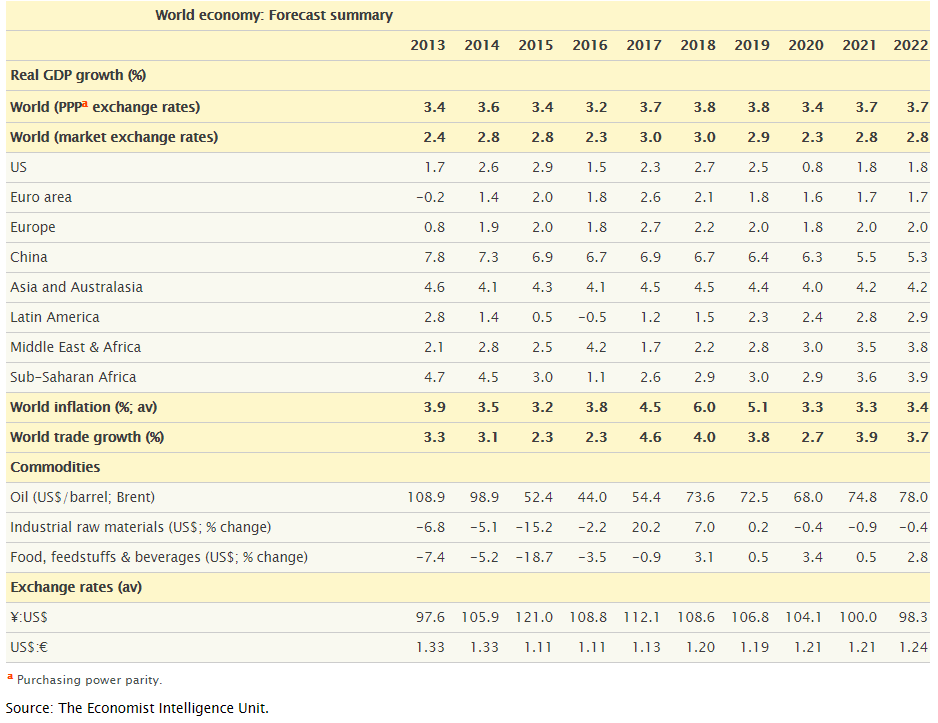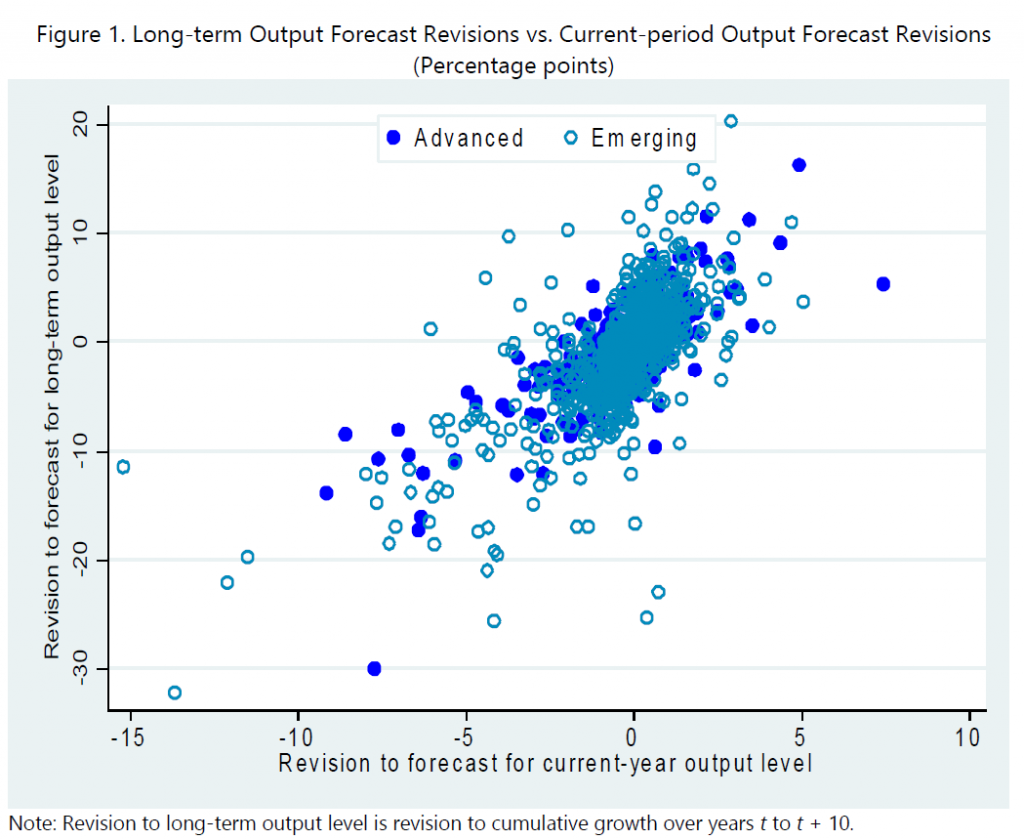Showing posts with label Forecasting Forum. Show all posts
Saturday, August 4, 2018
Predicting Fiscal Crises
A new IMF working paper finds that “both nonfiscal (external and internal imbalances) and fiscal variables help predict crises among advanced and emerging economies.”
“Our analysis identifies robust indicators of vulnerabilities that can help signal a high probability of the onset of a crisis in the near future. Building early warning indicators that help predict future fiscal crises is inherently difficult, including because countries may take mitigating action as they see the growing vulnerabilities. However, we find that some types of vulnerabilities are consistently relevant to explain fiscal crises. This raises the question why governments do not act as they see signals. In large measure they do, as crises among advanced economies are rare. Still, the occurrence of crises may reflect overly optimistic projections about the future (e.g., economic growth, cost of debt), and as such governments underestimate the risks and fail to take mitigating measures. Another possibility could be that other shocks or crisis (e.g., banking) could lead to fiscal pressures”

A new IMF working paper finds that “both nonfiscal (external and internal imbalances) and fiscal variables help predict crises among advanced and emerging economies.”
“Our analysis identifies robust indicators of vulnerabilities that can help signal a high probability of the onset of a crisis in the near future. Building early warning indicators that help predict future fiscal crises is inherently difficult, including because countries may take mitigating action as they see the growing vulnerabilities.
Posted by at 5:35 PM
Labels: Forecasting Forum
Thursday, August 2, 2018
What Are Economists Getting Wrong Today?
A new BloombergQuint post by Simon Kennedy notes my research on forecasting recessions that “Indeed, a 2014 study by Prakash Loungani of the International Monetary Fund found that not one of the 49 recessions suffered around the world in 2009 had been predicted by a consensus of economists a year earlier. Further back, he discovered only two of the 60 recessions of the 1990s were anticipated a year in advance.”
It also summarizes the views of many economists:
“Given our past record in predicting the economic impact of technology, economists will probably get this wrong again. Today, weak productivity growth seems puzzling at a time of great new technological innovations. But in the past, it took decades for electricity or cars or computers to be fully integrated into our production processes and business practices and to boost productivity growth. Likewise, the internet of things or artificial intelligence will take time to be similarly integrated and to be visible in our measures of productivity. While being well aware that, in the 1930s, [John Maynard] Keynes famously predicted that automation would lead to a three-hour working day, my sense is that this process is likely to speed up and surprise on the positive side.”—Peter Praet, Chief Economist at the European Central Bank
A new BloombergQuint post by Simon Kennedy notes my research on forecasting recessions that “Indeed, a 2014 study by Prakash Loungani of the International Monetary Fund found that not one of the 49 recessions suffered around the world in 2009 had been predicted by a consensus of economists a year earlier. Further back, he discovered only two of the 60 recessions of the 1990s were anticipated a year in advance.”
It also summarizes the views of many economists:
“Given our past record in predicting the economic impact of technology,
Posted by at 9:46 PM
Labels: Forecasting Forum
Sunday, July 29, 2018
Difficulties of Making Predictions: Global Power Politics Edition
A new post by Timothy Taylor says that “Making predictions is hard, especially about the future. It’s a comment that seems to have been attributed to everyone from Nostradamus to Niels Bohr to Yogi Berra. But it’s deeply true. Most of us have a tendency to make statements about the future with a high level of self-belief, avoid later reconsidering how wrong we were, and then make more statements. […] The questions of how to predict for what you don’t expect, and how to plan for what you don’t expect, are admittedly difficult. The ability to pivot smoothly to face the new challenge may be one of the most underrated skills in politics and management. ”
Continue reading here.
A new post by Timothy Taylor says that “Making predictions is hard, especially about the future. It’s a comment that seems to have been attributed to everyone from Nostradamus to Niels Bohr to Yogi Berra. But it’s deeply true. Most of us have a tendency to make statements about the future with a high level of self-belief, avoid later reconsidering how wrong we were, and then make more statements. […] The questions of how to predict for what you don’t expect,
Posted by at 3:45 PM
Labels: Forecasting Forum
Saturday, July 21, 2018
EIU global forecast – Growth will slow in 2019
From the most recent EIU global forecast:
Posted by at 4:36 PM
Labels: Forecasting Forum
Is the Cycle the Trend? Evidence from the Views of International Forecasters
A new IMF working paper by John Bluedorn and Daniel Leigh revisits “the conventional view that output fluctuates around a stable trend by analyzing professional long-term forecasts for 38 advanced and emerging market economies. If transitory deviations around a trend dominate output fluctuations, then forecasters should not change their long-term output level forecasts following an unexpected change in current period output. By contrast, an analysis of Consensus Economics forecasts since 1989 suggest that output forecasts are super-persistent—an unexpected 1 percent upward revision in current period output typically translates into a revision of ten year-ahead forecasted output by about 2 percent in both advanced and emerging markets. Drawing upon evidence from the behavior of forecast errors, the persistence of actual output is typically weaker than forecasters expect, but still consistent with output shocks normally having large and permanent level effects.”
A new IMF working paper by John Bluedorn and Daniel Leigh revisits “the conventional view that output fluctuates around a stable trend by analyzing professional long-term forecasts for 38 advanced and emerging market economies. If transitory deviations around a trend dominate output fluctuations, then forecasters should not change their long-term output level forecasts following an unexpected change in current period output. By contrast, an analysis of Consensus Economics forecasts since 1989 suggest that output forecasts are super-persistent—an unexpected 1 percent upward revision in current period output typically translates into a revision of ten year-ahead forecasted output by about 2 percent in both advanced and emerging markets.
Posted by at 1:11 PM
Labels: Forecasting Forum
Subscribe to: Posts

